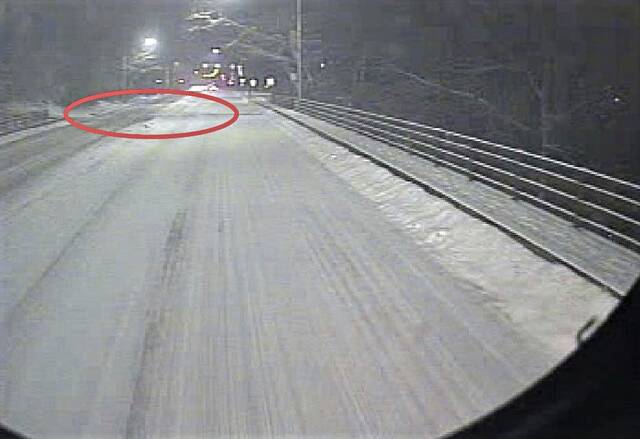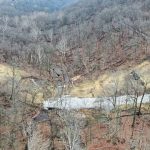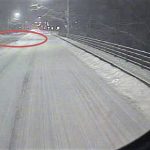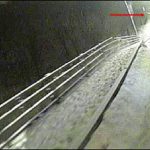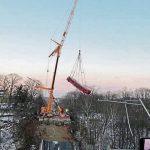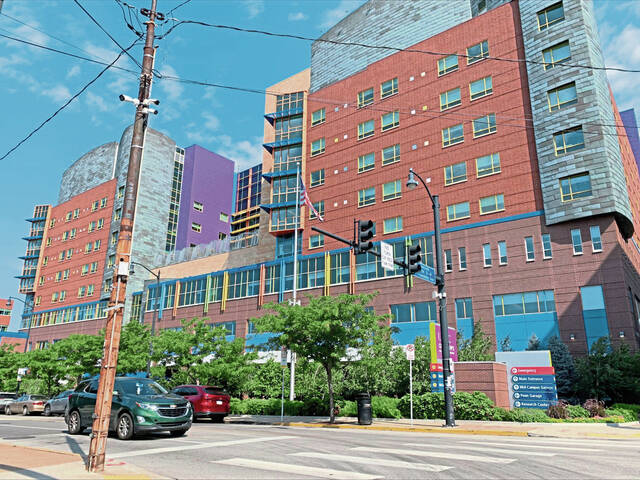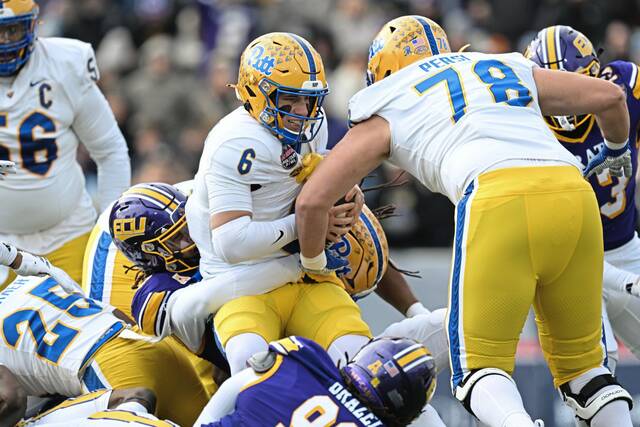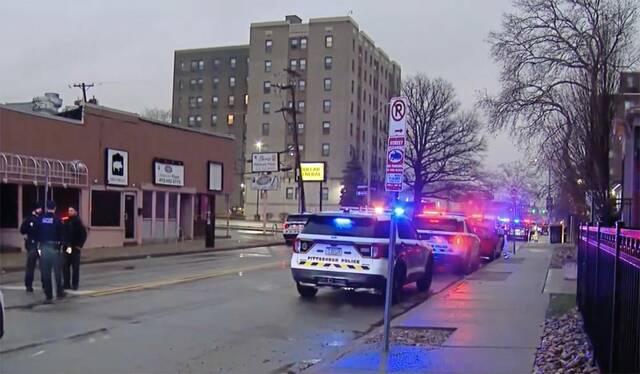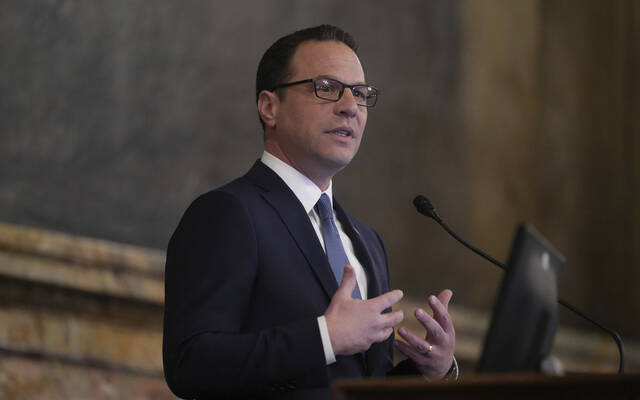New photos of Pittsburgh’s Fern Hollow Bridge collapse released by the National Transportation Safety Board appear to shed some light on the chain of events leading up to the catastrophe earlier this year.
The 447-foot-long bridge — which carried Forbes Avenue over the north side of Frick Park — fell at around 6:40 a.m. Jan. 28, according to updated information the NTSB released Thursday.
Nine people in six vehicles, including a Port Authority bus, fell more than 100 feet as the bridge collapsed into the ravine and hillsides below.
“Two of the vehicle occupants sustained serious injuries, two sustained minor injuries, four were not injured, and the injury status of one is unknown,” NTSB investigators said.
A photo captured by one of the bus cameras and released by the investigatory panel shows the bridge deck beginning to separate at the east expansion joint on the side of the bridge in Point Breeze and leading into Regent Square.
A second photo from a bus camera shows the west end of the bridge on the Squirrel Hill side falling off the west abutment at about the same time.
“The first frame is from the forward-facing camera and shows the bridge deck separating at the east expansion joint… The second frame is from the curbside camera and shows that, at nearly the same time, the west end of the bridge has already fallen off the west abutment…,” the NTSB wrote.
The board also released video footage frames from two bus cameras Thursday, documenting the time of collapse.
NTSB and Federal Highway Administration investigators also are evaluating 3D laser scanned models of the wreckage, the materials used to construct the bridge, plate dimensions and weld quality.
“Areas of each component were subsequently identified for additional analysis, and the bulk of the retained sections are being housed at the Federal Highway Administration’s Turner-Fairbank Highway Research Center in McLean, Va., for future testing. Other pieces will be analyzed at the NTSB’s Materials Laboratory,” the NTSB wrote.
As of Thursday, investigators say they have not found evidence of “widespread deficiencies” with the bridge’s K-frame superstructure types.
The board’s preliminary report said that “although certain areas of the welded steel girders were identified as being fracture critical, no primary fractures were found in these areas.”
NTSB plans to issue safety recommendations once it determines the probable cause of the collapse. It could take 12 to 18 months for the board to release its final report.
At the time of collapse, the bridge was considered to be in poor condition by PennDOT. In Pennsylvania, bridges — which are inspected at least every two years — are rated good, fair or poor.
When the bridge fell, first responders formed a formed a human chain to rescue those trapped in their vehicles.
Later that day, President Joe Biden visited the bridge for about 10 minutes to speak with first responders and local officials. Biden had been slated to speak in Pittsburgh about infrastructure funding the day of the collapse.



